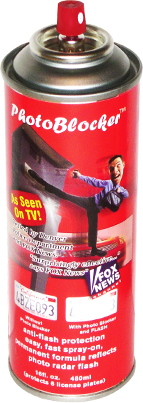Chicago – Here’s a number to consider the next time before you blow through a red light in Chicago: $64.1 million. That’s the financial haul the city’s red light cameras raked in in fines last year.
It’s far more than the color red that’s now torquing motorists, but what they view as a lack of yellow.
“Why can’t the city afford to give us all citizens and motorists one more second of yellow?” said Barnet Fagel, a safety advocate and researcher for the National Motorists Association.
PDF: Fines from Chicago Red Light Cameras (2007-09) >>
LINK: Ticketed Drivers Can Watch Video of Red Light Run >>
Fagel claims the three-second yellow light used at intersections in Chicago where the speed limit is 30 miles per hour or less, is not nearly enough time.
“It may be posted for 30 miles an hour. The light may be timed for 30 miles an hour, but the is moving at 35 to 40 miles per hour,” he said. “That’s the speed signals should accommodate.”
A study conducted by Texas A & M University found that adding one second of yellow decreases crashes 35 to 40 percent and violations by 60 percent. But Brian Steele, Chicago Department of Transportation director of communications, said he envisions more crashes if the city were to add an extra second of yellow at its intersections.
“We think it will decrease safety,” Steele said. “Motorists will use that extra second of time not to slow down but to speed up as an extension of their green time. We see that a lot in Chicago and we think we could see more. ”
There are 184 camera intersections in Chicago, with an average of two cameras per intersection. Steele said CDOT follows federal and state guidelines with its yellow light times at city intersections.
But Barnet Fagel insists the city has steered away from that three-second yellow. He said he shot video this winter, which he posted on YouTube.com, showing red light intersections with yellows under three seconds.
“Which proves undeniably, unequivocally, the cameras profit and the safety cannot coexist at the same intersection,” Fagel said.
Steele, of the Chicago Department of Transportation, disagrees.
“I don’t know their methodology or the methods they have. I do know anyone suggesting Chicago’s yellow lights are less than three seconds are flat out wrong,” he said.
We went to Chicago’s top 10 revenue-grossing red light intersections, all of which generated more than $1 million each last year. Fagel featured many of these very intersections in his YouTube video. But time after time, each one clocked by FOX Chicago News came out to three seconds exactly. Not a hair longer or shorter.
Chicago mother Tiffany Moeller said that ever since the city expanded red light cameras citywide three years ago, the yellows have gotten shorter.
“I find myself speeding up through the yellow or slamming on the breaks because I’m scared to go through the yellow. Sometimes I find myself stopping on the green,” said Moeller, who estimated she passes a dozen red light cameras to take her kids to and from school. “I’m afraid of getting rear-ended. That’s my worst fear, getting rear-ended with the kids in the backseat. If they come into the rear of the car, that’s my children’s life.”
The outcry against red light cameras has mushroomed into a full fledged legislative battle in Springfield.
“We’re told this is about safety. It’s not. It’s about money. It’s causing more dangerous intersections,” said Scott Tucker, a Republican candidate for State Representative in the 11th District, which spans the city’s DePaul and Lincoln Park neighborhoods.
Tucker and State Sen. Dan Duffy have become two of the louder voices pushing for a repeal of all red light cameras in Illinois — and longer yellow lights.
“You have another second, second and a half to bring your vehicle to a full stop behind the line, especially if you’re going 35 miles per hour. A three second yellow is not enough,” Duffy said.
Many of Chicago’s suburbs seem to concur. In Skokie, Winnetka, and Evanston we found yellow lights lasting more than four seconds, time after time after time.
Critics of Chicago’s red light enforcement argued that although the city is sticking to the letter of the law, they said the city’s motives seem to be rooted in revenue.
“Our city used to feed the whole world from its stockyards. Now, they’re feeding off the drivers and visitors,” Fagel said.
















